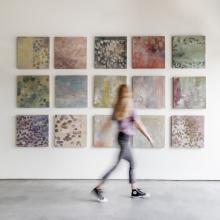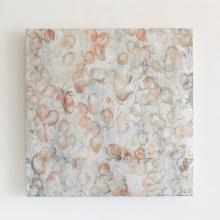Jennifer Wagner | Featured Artist
January 10, 2023
Jennifer Wagner is an incredibly talented abstract expressionist who has developed a unique style from her time studying classic car restoration, which incorporates her deep understanding of the mechanics of pigment, transparency, refraction, and finish. Her “built up” pieces are truly masterful, as they display a prismatic depth and play with shadow, blur, and reflection in unexpected and captivating ways. Her art is a perfect combination of technical mastery and creative expression that is sure to leave viewers mesmerized.


In Jennifer Wagner's artistic practice, the manipulation of shadow, blur, and reflection is the central focus. Her mixed media approach, using plaster, acrylic paste, and powdered pigment, produces marks that resemble classic impressionism more than modern expressionism. By creating an active form from a control mechanism, Wagner reveals her visual idiom: "Creating freedom from control and randomness from organization". Each form she creates serves as an alter ego of the artist's inner self. The patterns in her work are inspired by old-world geometric decoration, often borrowing from designs such as quilts, kaleidoscopes, and mandalas.
Layers are applied, many times on both the forward and reverse side of an acrylic sheet or embedded within layers of resin and plaster, giving the work a delicate feel without losing a sense of action. When viewing Wagner’s work, there is visual depth at even the closest distance; what is being observed is light flowing beneath translucent layers creating faint shadows beneath higher marks.
In 2009, Wagner began a relationship with artist Alan Alldredge where surrounded by a wealth of materials and equipment, she first experimented with different themes and processes. This later matured into a passionate, constant discipline pursuing abstract expressionism. Wagner’s work embodies linear soft square marks placed in forward and aft hierarchies, creating a prismatic depth to all of her pieces. Her work is not just about the material. When she paints, Wagner imagines each mark as being an individual – belonging to a family or social structure within the piece.

Art by Jennifer Wagner. Design by Thomas Pheasant.


